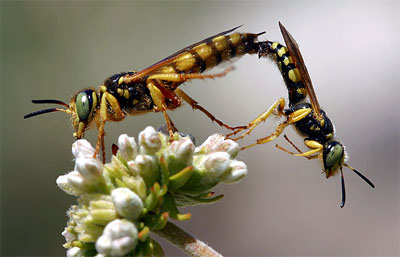
30 years ago, biologists thought they'd solved one of Darwin's thorniest problems, the evolution of sterile social insects:
No doubt many instincts of very difficult explanation could be opposed to the theory of natural selection,âcases, in which we cannot see how an instinct could possibly have originated...I will not here enter on these several cases, but will confine myself to one special difficulty, which at first appeared to me insuperable, and actually fatal to my whole theory. I allude to the neuters or sterile females in insect-communities: for these neuters often differ widely in instinct and in structure from both the males and fertile females, and yet, from being sterile, they cannot propagate their kind.-Charles Darwin, On the Origin of Species
The apparent solution to Darwin's conundrum was an elegant formulation by W. D. Hamilton. Genes can propagate themselves not only through direct reproduction, but by assisting in the reproduction of other individuals that carry the same gene. A worker ant may be sterile, but she can give her fertile sisters a boost. Sociality could evolve after all. This concept of increased fitness through assisting one's relatives is called kin selection, and it was immediately popular among social insect biologists.
In recent years, a number of scientists have challenged kin selection orthodoxy with a rather fuzzy concept called "group selection", holding that kin selection cannot explain the advent of social insects. One of their arguments is that social insect colonies are often composed of individuals that aren't closely related. In many species, including the conspicuous honeybees and leafcutter ants, queens mate with multiple partners and colonies are assemblages of mostly half-sisters instead of full-sisters. Under these conditions of loose relatedness kin selection loses its potency. If the first social insects mated multiply, then kin selection could not be a factor.
But what can we know of these extinct social ancestors? Phylogenetics to the rescue!
A new study in this week's Science lays to rest the multiple-mating objection. In a powerful demonstration of phylogenetic inference, Hughes et al combine data on the mating habits of different living insect species with an evolutionary tree to show that ancestral social insects- all eight of them (as far as we can tell)- were monogamous. Here's the citation and abstract:
Hughes, Oldroyd, Beekman, & Ratneiks. 2008. Ancestral Monogamy Shows Kin Selection is Key to the Evolution of Eusociality. Science 320: 1213-1216.
Abstract: Close relatedness has long been considered crucial to the evolution of eusociality. However, it has recently been suggested that close relatedness may be a consequence, rather than a cause, of eusociality. We tested this idea with a comparative analysis of female mating frequencies in 267 species of eusocial bees, wasps, and ants. We found that mating with a single male, which maximizes relatedness, is ancestral for all eight independent eusocial lineages that we investigated. Mating with multiple males is always derived. Furthermore, we found that high polyandry (>2 effective mates) occurs only in lineages whose workers have lost reproductive totipotency. These results provide the first evidence that monogamy was critical in the evolution of eusociality, strongly supporting the prediction of inclusive fitness theory.

Doesn't a colony with one queen have high relatedness even if she mated with multiple males? Multiple mating affects how closely workers are related to each other, relative to the queen, but I'm not sure I fully understand the implications. See my post at This Week in Evolution and a comment from Ben Oldroyd.
Actually, kin selection theory and its application to social insects does not depend on within-colony relatedness being particularly high. This is a common confusion. Hamilton's original theorem states that altruism (helping others with cost to oneself) can evolve, when the benefits weighted by relatedness are bigger than the cost of helping. This means, that relatedness can be low, if costs are low or benefits high. This also means that the ecological factors promoting the evolution of socialit are also included in the theory, and are by no means contradictory to the kin selection theory.
For altruism to evolve, the relatedness does not have to be high, but it has to be positive; that means, that the individuals in question need to be genetically more similar than individuals drawn from the population at random. This is true in multiply mated colonies of social insects, and even those headed my multiple queens. For a balanced analysis, see Foster et al. 2008: Kin selection is the key to altruism, TREE 21:2.
sorry, the reference is supposed to be Foster et al 2006 TREE 21: 2, not 2008